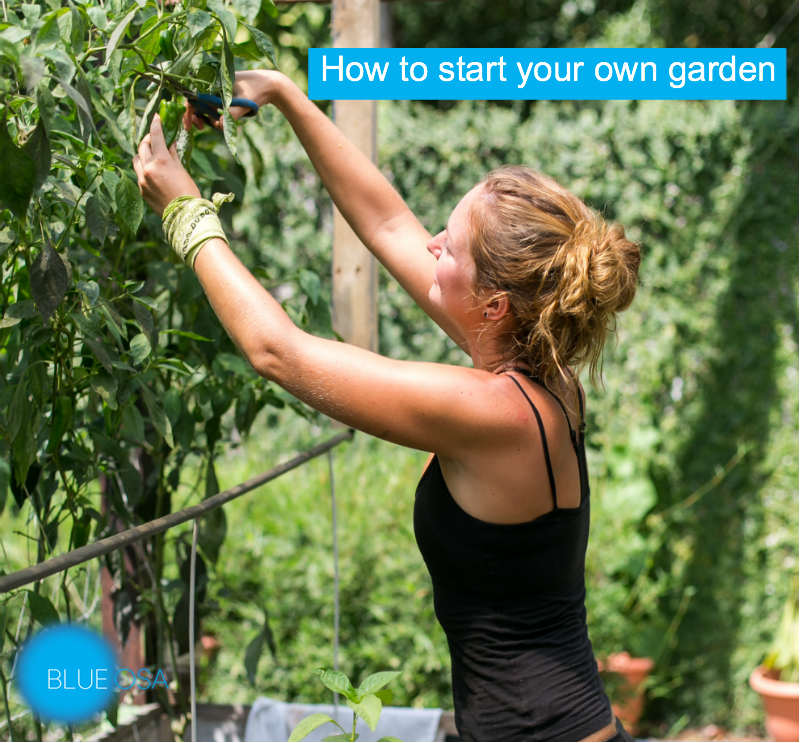Here at Blue Osa we have embraced the challenge of creating a garden in the jungle. We tackle extreme weather, all kinds of insects, various types of molds and a slew of other critters that are eager to eat our food.
However, despite the difficulties, our passion for fresh food pushes us to overcome these obstacles.
If you want to garden, but your environment presents certain problems, don’t let this stop you. If we can take on nature in the jungle, you can do it too! Follow these 6 steps to help start your own garden so you can eat fresh food throughout the year.
- Start with good soil – It doesn’t matter how much love or effort you put into your garden if your plants don’t have the proper nutrients to grow in you won’t get great results. Start with organic soil or organic potting soil and organic compost. Mix 2/3 soil with 1/3 compost. (*Note: if you are starting a potted garden make sure to buy potting soil as it will have different quantities of nitrogen and other nutrients – if you pot plants with regular soil the composition may be too strong and can burn your plants).
- Find your sunlight – If you have a southern facing window in your home or apartment you will probably want to start your garden there. If you don’t have a southern exposure, observe where the most light comes in. If it is cold outside, make sure to keep your plants a good distance from the window, since they may catch a draft.
- Go with potted plants – It allows you to plant a variety of vegetables and herbs indoors, on a patio, front step, or back porch. Also, this keeps your garden mobile. If the basil isn’t doing well in the corner, no problem, you can pick it up and move it to a new spot.
- Plant what you eat – Do you love peppers? Rosemary? Oregano? Plant things that you will actually use, this keeps you more interactive with your garden. When life gets busy it can be easy to walk by plants or leave them unattended. If you clip a few leaves of basil a few times a week, you will be sure to take better care of your plants, and therefore, receive better yields from them.
- Plant resilient plants – Herbs are a good place to start as they will grow well indoors or outdoors. Try some mint or basil. Pepper plants are hearty as well. If you enjoy spicy foods with some chilies, they spice up your food and brighten up your home.
- Plant a lot and keep it diverse – Instead of having one big pot of basil, plant four smaller pots. Put them in different areas of your house. Plant at least three or four different types of plants. This will ensure that you can find a variety or species that does well in your environment. There is a lot of trial and error in gardening. Therefore the more options you try, the more likely you’ll be to find something that works.
Hope these tips are helpful. Now get out there and start gardening!
About the author
Lara was a volunteer at Blue Osa working in the gardens. She is originally from Minnesota and spent the last three years in Colorado. In 2013 she decided to spend a year abroad focusing on travel, yoga & gardening.







